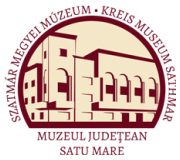Marta, Livius et al.: The Late Bronze Age Settlement of Nyíregyháza-Oros „Úr Csere” (Satu Mare, 2010)
VIII. Conclusions. Nyíregyháza-Oros site and its significance for the reearch of the Late Bronze Age
the RBD phase. The relationships with the neighbouring cultural environments could be captured thanks to the import items present in the settlement, the establishment of a correlation between the evolution of the materials of Hajdfibagos-Cehăluţ type and those of Suciu de Sus/Lăpuş type, being thus possible. The placing of the Oros settlement’s evolution during a late period of the Hajdúbagos-Cehăluţ group’s evolution requires a presentation of the links that the Hajdúbagos-Cehăluţ group has with its subsequent cultural manifestations, respectively of the cultural heritage transmitted to the Lăpuş II-Gáva I and pre-Gáva cultural horizons. The presence of some black ware, polished on the outside or with a double colouring, black on the outside and brick-like coloured on the inside, although limited in quantity among our findings, predict the distinctive features of the future Gáva culture, at which birth, we believe the cultural group Hâjdubagos-Cehăluţ brought its contribution. The small number of vessels with the above mentioned characteristics makes us believe that the inhabitation in the „Úr-Csere” point ended in a period when the transformation process that would lead to the widespread adoption of black, channelled pottery, barely begun. As seen from the analysis of the types and variants of pottery from Oros, many elements of the ceramic ware of the Hajdfibagos-Cehăluţ type continue to be present in the material culture of the pre-Gáva cultural horizon351. It is the case of the types 1, 3, 4 and 6 of amphorae and of all the variants of the bowls of type 2 and 3. It is possible that the tradition of the legged vessels or of the lobed rim bowls present in the pre-Gáva type ceramics have their origin in the legged cups/mugs from the Hâjdubagos-Cehăluţ cultural group. The pre-Gáva type pottery continues to have a large number of ornaments that used to define the Hâjdubagos-Cehăluţ pottery (knobs, ribs, channels). The incised, dotted and thumb impressed motives are well represented, too. However, certain ceramic shapes, such as the portable cooking vessels or some variants of tall legged mugs, rather numerous in the ceramic repertory of the mentioned group, are no longer present in the subsequent period. This aspect is also meant to highlight the deep transformations taking place within the pottery of the central Hungarian Plain once with the end of the Hajdfibagos-Cehăluţ cultural group. In this respect, it should be mentioned that for the final part of the RBD period - the beginning of the HaA one, the penetra-351 For the comparison with the pre-Gáva type pottery, we used the works of V. Szabó (1996, 2004). 70
